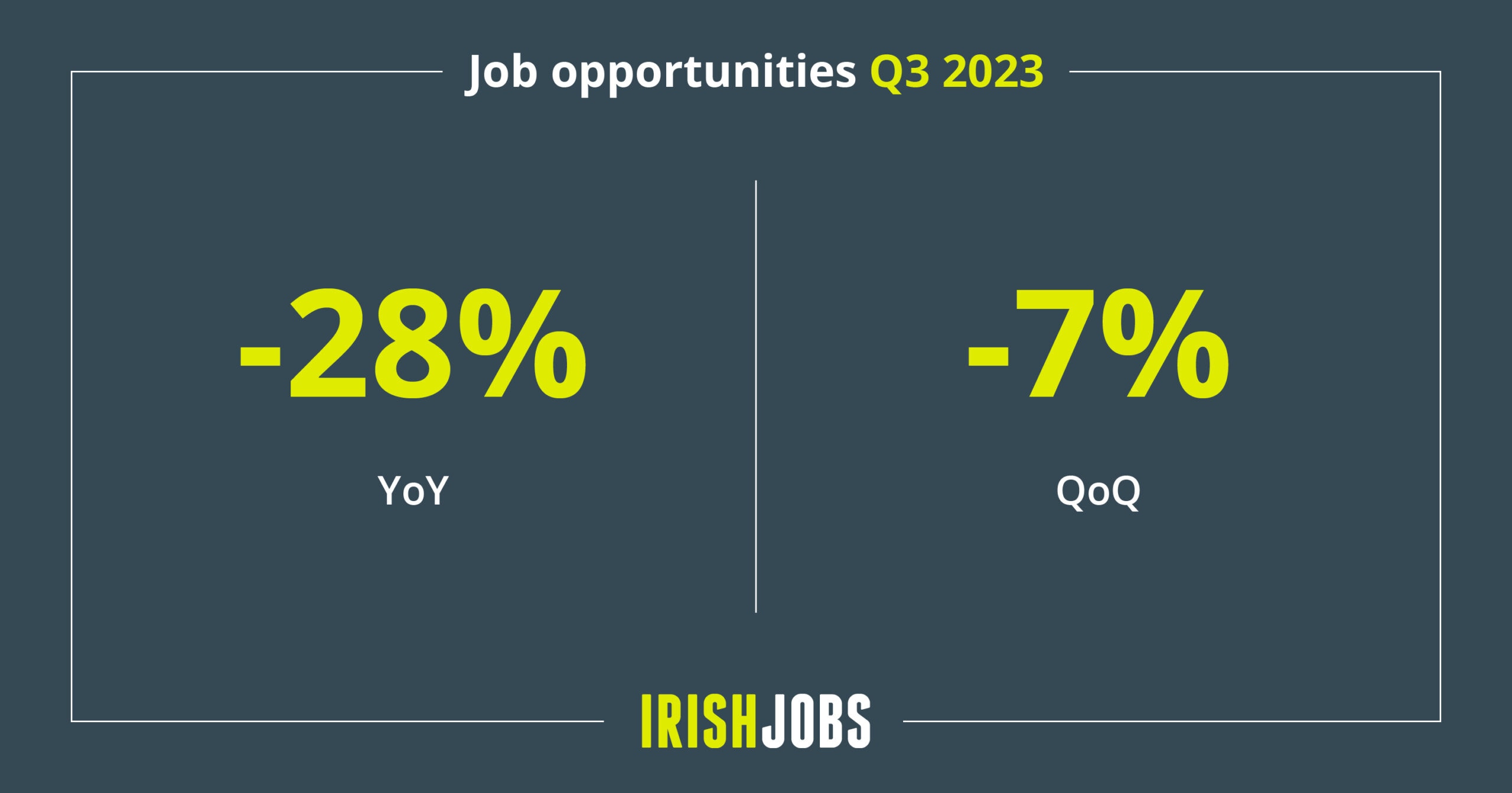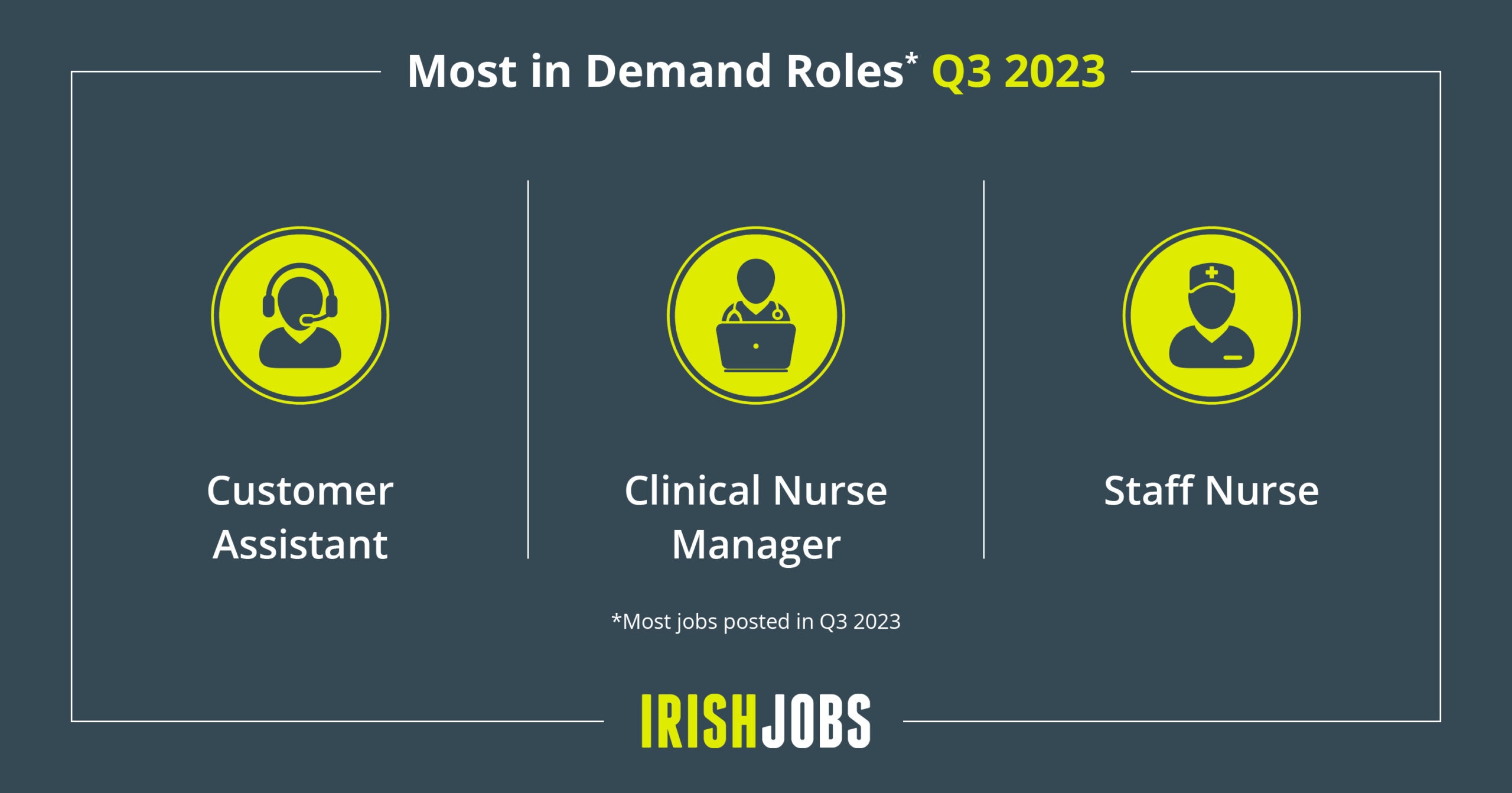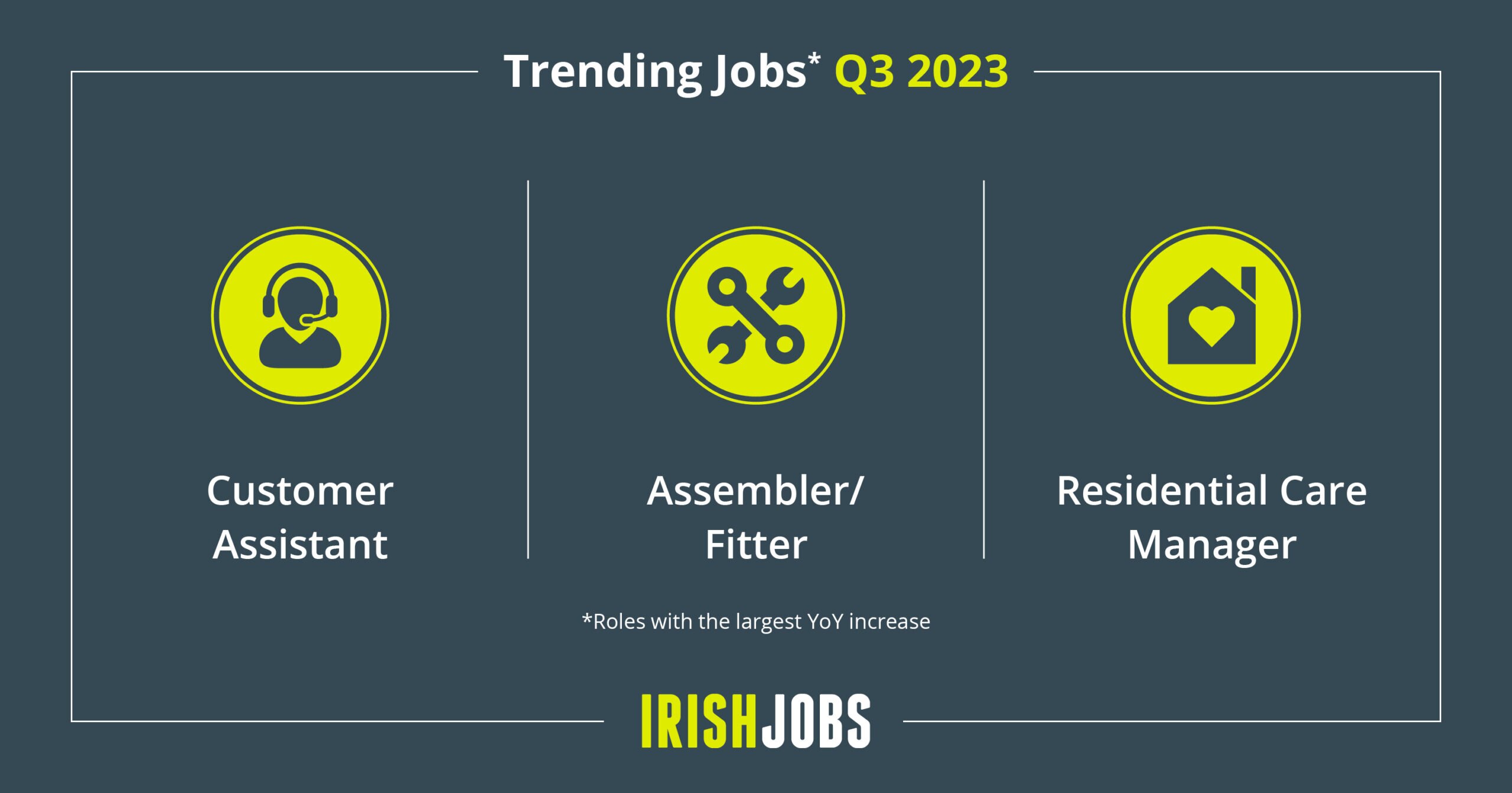Today at IrishJobs we have published the results of the latest Jobs Index for Q3 2023. The data for the third quarter indicates the job market continues to rebalance against a backdrop of near-full employment.
The decline in job vacancies from last year’s high continues this quarter with a 28% year-on-year and 7% quarter-on-quarter decline recorded. However, the level of job vacancies in the economy remains healthy, with 22 of the sectors examined remaining above pre-Covid Q3 2019 levels.

This comes against a backdrop where the Irish labour market continues to perform robustly, with the unemployment rate at approximately 4% over the past year, and the most recent Labour Force Survey reporting an employment rate of 74%, the highest rate since the current series of records began.
Sectoral Trends
Catering, accounting for a wide range of hospitality services, was the sector that accounted for the most job vacancies (13%) in Q3. Management (8%), Sales (8%), Customer Services (7%), and the Medical Professionals & Healthcare sector (7%) were among the other sectors that accounted for the largest proportion of job vacancies.
While the IT sector remains a major source of job vacancies in the Irish economy (6%), it has continued a downward trajectory since Q3 2022, when many technology companies began correcting a period of over-hiring during the pandemic period. The sector experienced decreases in vacancies of 42% year-on-year and 12% quarter-on-quarter.

Manufacturing & Customer Services
The manufacturing sector has experienced a modest increase (4%) in job vacancies for the second successive quarter, demonstrating the continued resilience of Ireland’s export industry despite global economic uncertainty. Following a downward trajectory throughout 2022, the sector appears to be stabilising and overcoming the challenges of economic factors such as higher production costs and reduced consumer spending in international markets.
The Customer Services sector experienced strong year-on-year vacancy growth (9%). Against a highly competitive domestic business environment, they may reflect a greater long-term focus by businesses on delivering high-quality customer care in order to better compete in attracting and retaining customers.
Retrenchment
Economic uncertainty continues to impact several prominent domestic sectors. Construction (year-on-year -31%, quarter-on-quarter -23%), Property (year-on-year -33%, quarter-on-quarter -29%), and Finance (year-on-year -34%, quarter-on-quarter -24%) all experienced decreases in quarterly and yearly vacancies. Annual decreases may be attributed to a tapering-off effect following a post-pandemic hiring surge. The quarterly decreases are likely directly due to economic factors such as rising interest rates, with increases in the cost of capital having a particularly significant effect on these sectors.

Fully Remote Working
Fully remote/working-from-home vacancies experienced a 4% fall in Q3. However, the rate of the decrease was substantially lower than that of overall vacancies, indicating a growing stabilisation in the level of homeworking in Ireland/ Employers in the metropolitan areas of Dublin (77%), Limerick (11%), and Cork (4%) are responsible for the majority of working-from-home vacancies, a continued trend from the Q2 Jobs Index. These figures suggest that homeworking in Ireland is strongly driven by the pressures of commuting into large metropolitan centres.
Sam Dooley, Country Director of The StepStone Group Ireland with responsibility for IrishJobs, said:
“The IrishJobs Jobs Index is a consistent barometer into activity in the jobs market. Despite a slowdown in economic growth, results from the Q3 Index show us that the labour market remains strong, with an unemployment figure of approximately 4%, indicating the economy is close to full employment.
Job vacancies continue to decline this quarter in an ongoing trend following exceptional highs last year. However, the levels of job vacancies in the economy remain healthy as various sectors continue to normalise, with 22 job sectors tracked in the Index sitting above pre-pandemic Q3 2019 vacancy levels.
Results from the Index recorded increased vacancies in the manufacturing industry for the second successive quarter, despite global economic headwinds. With a competitive domestic business environment, employers also appear to be prioritising the delivery of exceptional care for their customers. The customer services sector generated significant increases in yearly job vacancies, indicating the value attributed to retaining and attracting customers in the current economic climate.
With unemployment close to historic lows, the market for talent remains highly competitive. To attract and retain the best talent, employers need to consider talent strategies that incorporate evolving professional preferences and needs. In the context of a rising cost of living, offering a competitive base salary remains critical to success. Increasingly though it is the only one of a multitude of factors considered important by potential talent, with flexible working structures and other benefits growing in significance.”
